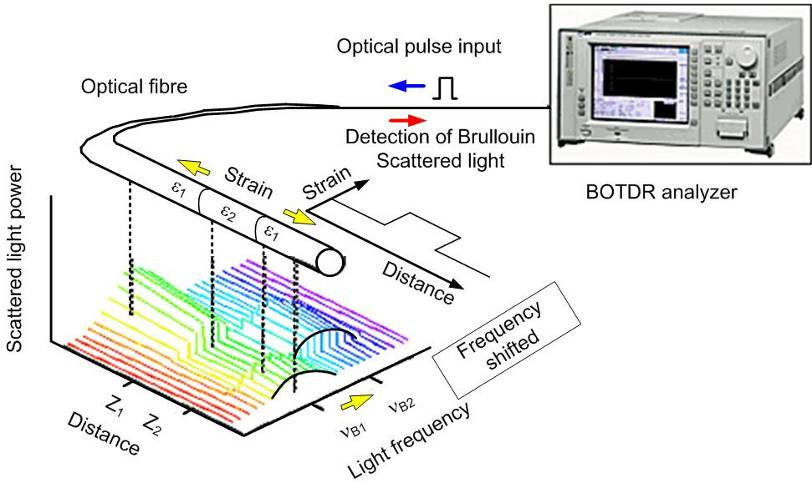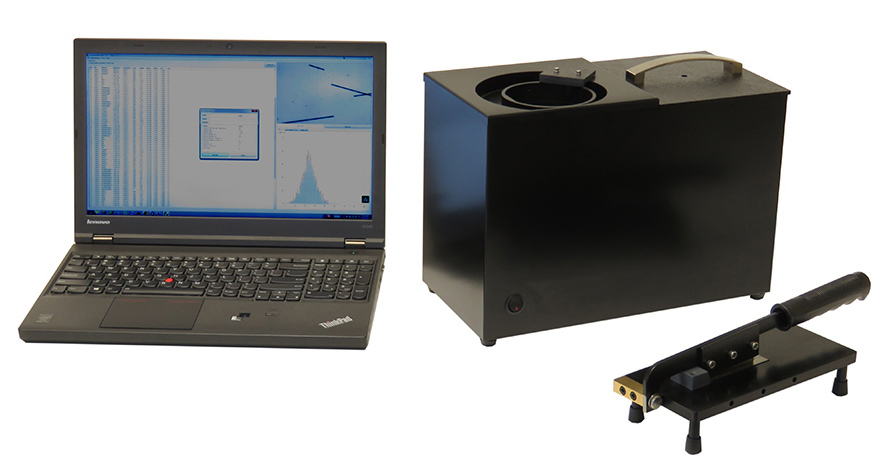Optimize Your Fiber Optic Efficiency: Recognizing Optical Fiber Diameter Analyser Modern Technology
The performance of fiber optic systems is critically affected by the precision of their size, a factor often ignored in the quest of optimum signal integrity. Recognizing the technology behind optical fiber diameter analysers discloses the intricate equilibrium in between dimension accuracy and manufacturing quality. These devices not only enhance conformity with market standards yet additionally offer real-time insights that can preemptively resolve possible issues. The effects of their usage expand past mere dimension; they can fundamentally modify the landscape of fiber optic performance. What variables should one think about to harness their complete possibility?
Importance of Optical Fibre Diameter
The diameter of optical fiber plays a critical role in identifying the performance and efficiency of communication systems. It affects a number of vital criteria, consisting of the mode of light propagation, attenuation, and bandwidth capacity. Larger sizes generally allow for multiple light modes, helping with greater data transmission rates. On the other hand, smaller sized diameters often tend to support less settings, which can boost signal clarity and minimize crosstalk.

In addition, recognizing the diameter's implications can lead to cost financial savings by decreasing the requirement for signal amplification and repeaters in comprehensive networks (optical fibre diameter analyser). To conclude, the significance of optical fibre size can not be overstated, as it directly influences the total efficiency and integrity of contemporary communication systems

Just How Size Influences Signal Quality
Signal quality in optical fibre systems hinges considerably on the diameter of the fiber. The size influences a number of key specifications, consisting of depletion, data transfer, and modal dispersion. A smaller diameter can result in higher attenuation rates, resulting in signal loss as light journeys via the fibre. This attenuation can compromise the integrity of the transmitted data, bring about a decline in signal high quality, specifically over fars away.
On the other hand, bigger sizes usually enable for boosted light capture and minimized modal dispersion, enhancing signal clarity. In multimode fibers, a bigger core diameter can sustain multiple light modes, however it may likewise introduce intermodal dispersion, which can deteriorate signal top quality. Picking the optimal fibre diameter is important for attaining the desired performance in certain applications.
In addition, the communication between the fiber size and the wavelength of the light utilized plays an essential role in figuring out the effective transmission distance and total signal honesty. Understanding exactly how fibre size affects signal top quality is necessary for network designers and engineers making every effort to enhance optical fiber systems for reputable, high-speed data transmission.
Review of Diameter Analyser Modern Technology
In numerous optical fiber manufacturing processes, accurate measurement of fiber diameter is necessary for guaranteeing regular performance and quality (optical fibre diameter analyser). Diameter analysers are innovative tools designed to evaluate the physical measurements of optical fibers with high precision. They utilize advanced optical and laser modern technologies to gauge the size, ovality, and concentricity of the fibre, hence offering crucial information for quality control
These analysers can operate in-line during the manufacturing procedure or as part of off-line screening methods. In-line systems make it possible for real-time surveillance, enabling producers to adjust criteria promptly, thereby preserving ideal manufacturing problems. Off-line analysers, on the various other hand, supply detailed assessments of batches, guaranteeing that any inconsistencies from specified resistances are recognized and resolved.
Size analysers substantially contribute to the reduction of flaws in optical fibers, enhancing total item integrity. By consistently measuring vital parameters, these innovations help with compliance with market requirements and requirements. As the demand for high-performance optical fibres continues to climb, the role of diameter analysers ends up being significantly crucial in achieving the preferred quality and efficiency requirements in fibre optic systems.
Key Attributes of Fibre Size Analysers
Although numerous versions of fibre diameter analysers exist, they typically share numerous essential functions that improve their performance and dependability. Among the most substantial features is high-resolution measurement abilities, which ensure accurate size analyses, important for keeping quality assurance in fibre manufacturing. Additionally, many analysers include sophisticated optical sensing units home designed to discover minute variants in fibre size, thus offering very useful information for process optimization.
Another essential function click reference is real-time surveillance, permitting drivers to obtain immediate comments on fiber size throughout the production process (optical fibre diameter analyser). This capability facilitates rapid modifications and minimizes the chance of issues. Several analysers also come furnished with user-friendly interfaces, making it possible for drivers to easily browse with setups and data results
Furthermore, robust data storage space and analysis performances are vital for tracking historic performance trends and making certain compliance with market criteria. These attributes collectively contribute to the effectiveness of fibre diameter analysers in enhancing fibre optic performance.
Best Practices for Fibre Optimization

First, regular calibration of optical fibre diameter analysers is vital. This ensures accurate measurements and decreases prospective inconsistencies that could influence performance. Next, keeping a tidy workplace is essential; dust and impurities can result in signify destruction.
Furthermore, it is necessary to choose fibers that fulfill details application demands. This entails examining variables such as attenuation, bandwidth, and environmental conditions. Correct installment methods ought to also be followed, including staying clear of sharp bends and extreme stress, which can endanger fiber stability.
Additionally, using sophisticated tracking systems can help with real-time performance assessments, allowing timely identification of concerns. Normal screening and upkeep should be performed to ensure that fibers continue to be within optimal functional specifications.
Lastly, training personnel on the most up to date fiber optimization innovations and approaches will enhance their ability to implement efficient techniques. By complying with these finest methods, companies can dramatically boost the published here performance and life-span of their optical fibre systems, ensuring efficient interaction and information transfer.
Verdict
In conclusion, the integration of optical fibre diameter analyser innovation is important for optimizing fibre optic performance. By making sure accurate dimensions of fiber dimensions, these analysers significantly enhance signal quality and minimize losses during information transmission.
Signal quality in optical fibre systems hinges significantly on the size of the fiber.In numerous optical fibre production procedures, exact dimension of fibre size is crucial for making sure consistent performance and quality. As the need for high-performance optical fibres continues to climb, the function of diameter analysers becomes progressively essential in accomplishing the wanted quality and efficiency standards in fibre optic systems.
These attributes jointly contribute to the effectiveness of fiber size analysers in maximizing fiber optic performance.
In conclusion, the combination of optical fibre size analyser innovation is critical for taking full advantage of fiber optic efficiency.
Comments on “Improve Fiber Quality with an Precise Optical Fibre Diameter Analyser”